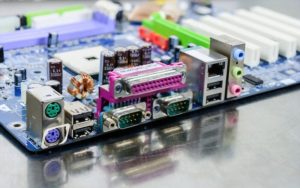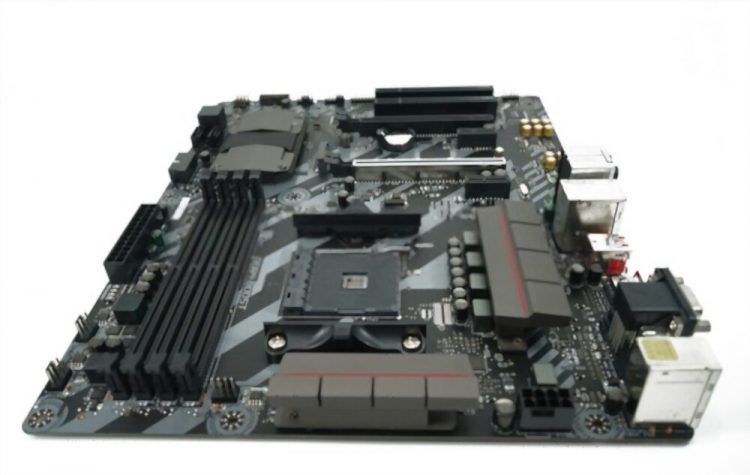How to check motherboard in windows 10?
There are numerous ways to find out which type of motherboard you have on your PC. One of the quickest ways to find out is through Windows 10. Yes, there are different methods through which you can identify your motherboard using Windows 10, and we would discuss each of them one by one here in this guide. However, before starting, let’s start with some basic functions of motherboards and how some useful benefits of Windows 10.

What are the functions of a Motherboard?
The following are the functions of a computer motherboard:
- The motherboard serves as the computer’s backbone, on which other modular components such as the CPU, RAM, and hard discs are mounted.
- The motherboard also serves as a platform for the installation of additional devices and interfaces via expansion slots.
- The motherboard is also in charge of distributing power to the computer’s numerous components.
- They’re also utilized to keep the computer’s numerous devices in sync and maintain an interface between them.
- BTX, ATX, mini-ATX, micro-ATX, LPX, NLX, and more sizes are among the motherboard sizes available.
Windows 10 and Its benefits
Built-in capabilities and compatibility for third-party applications in Windows 10 allow corporate IT departments to secure and govern devices running the operating system using mobile device management (MDM) and other application tools. This market has been successfully mastered by Windows 10. There are many benefits of using windows 10
- Windows can be snapped into corners.
- Examine your computer’s storage space.
- Create a brand-new virtual desktop.
- Instead of a password, use your fingerprint.
- Take control of your alerts.
- Toggle to a tablet-only mode.
- Play Xbox One games online.
How to find out what type of motherboard you have windows 10?
You’ll need the correct mainboard model if you wish to upgrade your computer or install driver updates. Even though computers have a clear model specification, manufacturers may employ geographically or over time slightly different variations of the same motherboard model.
You’ll need the correct mainboard model if you wish to upgrade your computer or install new drivers. Even with clearly defined model specifications, makers may employ substantially various forms of the same motherboard model across regions or over the period.
With onboard equipment, you can typically find out what motherboard kinds you have installed under Windows 10. However, in some circumstances, the motherboard isn’t stated in the system.
Identifying Motherboard in System Information in Windows 10
You can access “System information” via the Windows 10 search. Under the label “Baseboard,” Windows 10 typically displays the precise motherboard you have installed in the “System Overview.”
The “Baseboard maker,” the “Baseboard product,” and, if accessible, the motherboard’s model and version number can all be found there.
Although computer components such as RAM and graphics cards are easy to see in a system overview, figuring out your motherboard model isn’t always so straightforward.
Depending on your motherboard and operating system, you may need to take a few extra steps. It is, nevertheless, still possible for beginners to learn it.
How to Check Your Motherboard with Command Prompt
Using the Windows Command Prompt, you can quickly determine your motherboard model and serial number. In the Start menu search bar on Windows 10, type cmd and choose the Best Match option.
Use the Run shortcut, Windows + R, to open the Command Prompt, then type cmd in the popup window and hit Enter. Remember that modifiers like product and manufacturer should be separated by a comma rather than spaces.
The Command Prompt will not need to be executed as an administrator. You can use the Windows Management Interface Command (WMIC) to verify the manufacturer, model, name, and other characteristics of your motherboard after your command window is open.
Check Your Motherboard Model with Windows System Information
Your motherboard information can also be found in Windows System Information. This strategy, however, is hit-or-miss. In our tests, it appears to be compatible with some motherboards but fails to identify others.
This is the simplest way to check your motherboard model and brand on Windows if you have a compatible motherboard.
Next to Baseboard Manufacturer, Baseboard Product, and Baseboard Version, you should specify your motherboard details. If the information is not available in the fields, you should try one of the other motherboard checking methods described in this article.
- To begin, press Windows + R to launch Run.
- Type msinfo32 into the Run window and press Enter.
Using CPU-Z to Determine What Motherboard You Have
You can use CPU-Z if Command Prompt is unable to get your motherboard information or if you want a more detailed overview of its specifications.
This free program will provide you with a detailed breakdown of your computer’s hardware components.
You’ll gather details on your motherboard’s manufacturer, model, chipset, and more in this section.
To begin with, download CPU-Z if you haven’t already.
Inside, you’ll find the motherboard’s manufacturer, model number, and a slew of other information about the motherboard’s construction.
If you want to sell your current PC, this is, in my opinion, the best option. CPU-Z displays not only motherboard specifications but pretty much every other hardware specification as well, including CPU, RAM, and graphics.
The application can be downloaded from the CPU-Z website. When you install and activate the program, it will immediately evaluate and identify your components.
Simply click the “Mainboard” option to learn more about your motherboard.
With Belarc Advisor, you can check your motherboard
Belarc Advisor is another useful tool for determining the serial number of your motherboard.
The Belarc Advisor website offers a free download of the software.
Belarc has the advantage of not sending your data to any web servers. Instead, once the analysis is finished, you’ll be able to see the summary in a local file via your browser. Start the Belarc Advisor application to determine the sort of motherboard you have.
FAQs
Do I need to buy Windows 10 for a new motherboard?
You should not need to purchase a new Windows 10 license if you create a Microsoft Account for your PC and then do the motherboard change. You should not need to activate as long as you check in using your Microsoft account.
You can keep your hard disc or solid-state drive with your Windows 10 installation even if your motherboard is replaced.
The Windows 10 disc will be connected once the motherboard is replaced. If everything goes properly, Windows 10 will reorganize itself, and you will be able to use it again.
Also, you won’t have to reinstall Windows, but you will almost certainly have to reactivate it. If your motherboard is replaced, Microsoft will regard your computer as a new machine.
You may usually reactivate a retail license, but an OEM license will require you to purchase a new license.
Read About: How to Check If Your Motherboard is Working or Not
Will Windows 10 work if I change my motherboard and CPU?
After you exchange the motherboard and CPU, Windows 10 may deactivate, but you will be able to restart it. It’s also possible that it’ll just stay turned on.
There would be no need to do anything manually to get it working again under any circumstances. Because of the hardware upgrade, you will need to reactivate Windows.
A new motherboard and CPU update, in general, is considered a new machine by Microsoft. As a result, the license can be transferred to a new machine or system.
You will, however, need to reinstall Windows from scratch because the old Windows installation will most likely not operate on the new hardware.
You will need to reinstall Windows as well as all of the drivers. Depending on your Windows version, you may need to purchase a new key. A new motherboard is treated as if it were a new machine by Windows.
Conclusion
So there you have it, our step-by-step approach to figuring out which motherboard I have. Finally, checking your gear is a relatively simple task. As shown, there are a number of approaches for verifying these features, many of which need no technical knowledge or expertise.

Hi, this is Masab, the Founder of PC Building Lab. I’m a PC enthusiast who loves to share the prior knowledge and experience that I have with computers. Well, troubleshooting computers is in my DNA, what else I could say….

